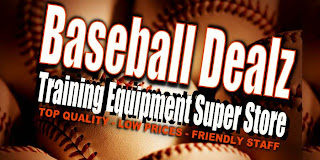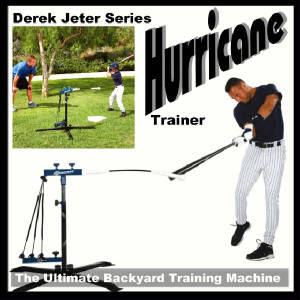
By John Mehrmann
Watching children at play offers valuable lessons for adults.
Many years ago I had the privilege of being a coach for my son's t-ball team. For those who may be unfamiliar with the term t-ball, it refers to a form of baseball for beginners. The main principles of baseball apply. There is a first base, second base, third base, and home plate. There is an infield and an outfield with all of the same positions. There is a pitcher's mound that is occupied by a player, but the pitcher does not pitch. The baseball is placed on a short pole that is referred to as a "tee". The tee is very similar to an enlarged golf tee, with the notable exception that it rests on a rubber mat as opposed to being pushed into the ground. The baseball is placed on the tee and the young batter gets three swings to hit the ball and, if successful, attempts to run to first base before being tagged out.
The game of t-ball provides an excellent opportunity to teach children the fundamentals of baseball and to participate in a team environment. Watching a successful baseball team is like watching the harmony emerging from a well rehearsed symphony orchestra. The players are aware of respective roles, placement, responsibilities, and the importance of well choreographed coordination with other players. Individual players may be exceptionally talented, but success can only be achieved if that talent is properly integrated with the abilities of the other players. A perfect throw can only be achieved if there is someone to catch. It is as simple as that. For youthful beginners, achieving such harmonious rhapsody of coordination requires a little patience.
An early challenge for first year t-ball players is to learn the rules of the game and position on the field. There is very little or no scientific method to assigning positions in the first year. There are no scouting reports. There are no tryouts. There are no t-baseball cards with statistics and profiles.
Watching the children take their positions on the field, I could not help but imagine how personalities and character are well defined at such an early age. The actions, decisions, and responses of the youth on the baseball field could easily be compared with characteristics displayed by adults. I wondered how much of the personalities of my colleagues had been displayed at such an early age, and how similar mannerisms in the office would be similarly evident if those individuals donned baseball caps and took their corresponding places on the field.
The pitcher stared intently at the batter. Leaning forward at the waist, one hand tucked firmly behind his back as if hiding a knuckleball, the boy clenched his teeth and glowered at the batter. Evidently the pitcher had watched some baseball games and accurately mimicked the facial expressions of a professional. Lacking chewing tobacco or a large wad of gum, the pitcher pushed his bottom lip forward with his tongue. His protruding left cheek and lower added to the intensity of his concentration. He had come prepared to play ball.
The boy on first base stood upright. His arms dangled loosely at his sides. His gloved hand bounced up and down alternately in front and behind him. His other hand adjusted his cap, scratched a runaway itch, and adjusted his cap once more. Each time that the batter prepared a swing, the boy on first base would immediately jump into action. As the bat swung forward, the boy at first base squatted at the knees as if to prepare for something. He was prepared for anything, even though he had no idea what to expect. Ready to protect his base, or chase the ball, or chase the batter. You could tell from the look in his eyes that he was ready to respond, even if he did not yet know what to expect or what was expected of him.
Two young girls had gladly accepted the responsibilities for second base and shortstop. The proximity of the positions on the field made it convenient for them to socialize. As the batter approached the tee with grim determination, the girls giggled and whispered to each other about the latest fashion accessories and the silliness of the boys on the team. Little faces, slightly shielded by the big baseball gloves, could not disguise the chorus of laughter and the tiny fingers pointed at the boys who took the game so seriously. The girls stood shoulder to shoulder. Their legs crossed below the knees, slightly turning side to side, and occasionally extending their arms above their heads to complete tiny pirouettes. They were completely content to be at the center of the field and the center of attention, both fully aware and completely impervious to the stares of the other players.
The young lad on third base stared at the stands and waved to his parents. His glove tucked neatly under his arm, it was rarely on his hand. Being on third base, the lad did not expect to see any action, at least not until after a runner had passed first and second bases. The time for a runner to make it halfway around the diamond was more than enough time for him to put on his glove, or at least so he thought. Having a position so close to the bleachers made it easy for him to entertain the crowd. One moment standing still and searching the faces of the attendees for an attentive audience, and the next moment dancing a small jig around third base. He was the star of his own show, infrequently looking over his shoulder to make sure that his own team was still on the field with him.
Then there was the outfield. The outfield is a very special place in baseball. Despite the fact that in t-ball the ball is placed on an immobile stick, a pedestal at the throne of the batter, the players in the outfield did not expect to get very much challenge. As they each walked away into the calm seclusion of the open field, they quietly enjoyed a lack of expectation. Center field laid down on the ground, arms and legs crossed comfortably. Center field's glove was propped under his head like a pillow. Meanwhile, right field and left field were sitting cross-legged and gingerly plucking blades of grass from beside their respective knees. Right field would throw a blade of grass in the air and try to catch it, or watch which way it would blow in the gentle breeze. Left field cupped a blade of grass in his hands and examined it in thorough detail. Left field picked up another blade of grass, compared them, tied them together, and then tried to fold them in half. As center field searched for animal shapes in the clouds, right field and left field were busy carrying out scientific experiments with grass.
As I reflected on how I could equate each of these wonderful antics with characteristics that I had witnessed in a business environment, my revelry was interrupted by the sound of bat meeting ball. The determined young batter had successfully connected with a swing that would make Babe Ruth proud. The ball sailed in a straight line past the pitcher's mound, skipped up some dust near second base, and bounced merrily into the outfield. By way of response, the pitcher jumped out of the way and then turned to chase the ball after it was safely beyond him. The girls at second base and shortstop clung to each other and squealed with a mixture of fright and delight. The actor at third base spun around like a top to see what the commotion was all about and tripped over third base in the process. The intense young boy at first base squatted nervously, stepping away from his post and back again, unsure of what to do in such an emergency. The entire baseball field seemed to buzz with excitement.
Just then, someone yelled "RUN!" I could see that the coach of the other team was running up to the batter and pointing excitedly in the direction of first base. He shouted, "What are you waiting for? RUN!"
Apparently the shouting of the other coach was exactly what the team needed. All at once they started to run. All of the players dashed madly in the direction of the baseball. The boy from first base was racing the boy from the pitcher's mound. The boy from third base jumped up from the ground and starting in such a hurry that he left his glove next to third base. The girls from second base and shortstop waved their hands in the air wildly as they trotted in the direction of the entire team that chased the ball. Right field and left field scrambled on hands and knees in the direction of the ball as it came to rest. Just as center field discovered the shape of a goldfish in the clouds, he was distracted by the sounds of thundering feet coming in his direction. Center field rolled to get out of the way of the oncoming crowd, the ball coming to rest near his glove pillow.
As I watched the entire team rush from the infield and into the outfield to chase the ball, I was reminded of countless conference calls and meetings that had resulted in exactly the same situation. How often have a multitude of colleagues gathered for meetings and conference calls, consuming the attention and enthusiasm of the masses, but leaving nobody behind to cover the bases? With everyone chasing the ball, who would be left behind to receive it? Certainly there were opportunities to get engaged at the pitcher's mound, or thwart the extent of the offensive rally with shortstop or a play from the preoccupied colleague at second base. With everyone consumed by chasing the ball, nobody was left to cover their own responsibilities and get their own jobs done. Having back-up and helping hands on the play would have been a good idea, but covering the bases and the areas of responsibility were equally important. This was an important lesson for the young players that day, and hopefully one that would be remembered in their adult years.
I smiled to myself and walked in the direction of the other coach, prepared to compliment him on the score of his young player. With no member of my team remaining to cover the bases, it was inevitable that the batter would be free to casually walk the bases and earn the first home run of his career. Yet, the other coach stood sternly with his hands on his hips, and his baseball cap pushed backwards on his head. I followed his unyielding gaze to the crowd of young players that jumped up and down with enthusiasm in the outfield. The children cheered wildly, as if they had all just won first prize. The group ran together from the outfield to home plate. In the middle of the herd of jubilant youngsters, a hand held aloft the baseball that had been retrieved from its place of rest in center field. There, in the middle of the cheering and celebration, was the batter. Upon hearing the command to 'RUN", he had joined the chase and in the subsequent celebration. As far as the players were concerned, there were no teams or rivalry, only the shared excitement.
There were many lessons that season. I only hope that the young players learned as much about teamwork and sportsmanship from their coaches and parents as we learned from them.
Play ball!
Words of Wisdom
"Baseball is 90% mental, the other half is physical."
- Yogi Berra
"One man alone can be pretty dumb sometimes, but for real bona fide stupidity, there ain't nothin' can beat teamwork."
- Edward Abbey
"Baseball is like church. Many attend, few understand."
- Lou Durocher
- John Mehrmann, Author of The Trusted Advocate: Accelerate Success with Authenticity and Integrity
John Mehrmann is author of The Trusted Advocate: Accelerate Success with Authenticity and Integrity. The book that is changing everything by reawakening personal values in business as a competitive edge
Article Source: http://EzineArticles.com/?expert=John_Mehrmann
Baseball Dealz Super Store - Buy your baseball trainers on ebay and save big!




















